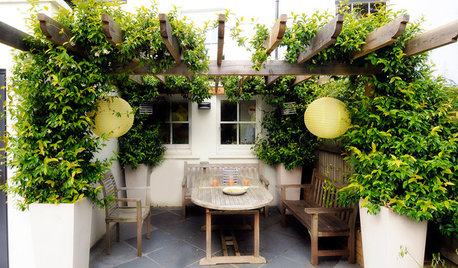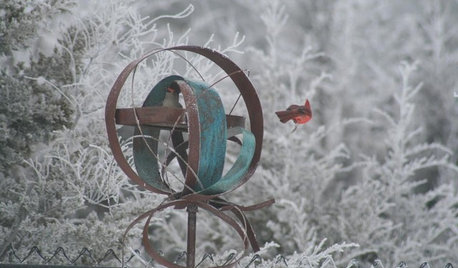want new winter varieties in garden...seeking opinions/advice
eaglesgarden
13 years ago
Related Stories

GARDENING AND LANDSCAPINGSeek Shelter in the Shade This Summer
Open up to outdoor living with 8 garden shade strategies
Full Story
DECORATING GUIDESNo Neutral Ground? Why the Color Camps Are So Opinionated
Can't we all just get along when it comes to color versus neutrals?
Full Story
GARDENING GUIDES6 New Plant Varieties That Beat Out Their Parents
With better resistance and fewer demands, these garden beauties are worth a spot on your wish list
Full Story
GARDENING GUIDESGarden Myths to Debunk as You Dig This Fall and Rest Over Winter
Termites hate wood mulch, don’t amend soil for trees, avoid gravel in planters — and more nuggets of garden wisdom
Full Story
HOUSEPLANTSIndoor Winter Gardens for Cheerier Days
Bring plants inside for drab-days mood boosting — not to mention cleaner indoor air and protection for your greenery
Full Story
HOUSEPLANTSHow to Force Amaryllis Bulbs Indoors
Enjoy vibrant red blossoms even as gardens turn snowy white, by teaching this hardy repeat performer to ignore the calendar
Full Story
DECORATING GUIDES10 Design Tips Learned From the Worst Advice Ever
If these Houzzers’ tales don’t bolster the courage of your design convictions, nothing will
Full Story
BATHROOM DESIGNDreaming of a Spa Tub at Home? Read This Pro Advice First
Before you float away on visions of jets and bubbles and the steamiest water around, consider these very real spa tub issues
Full Story
GARDENING GUIDESGreat Design Plant: Kumquats for a Juiced-Up Winter
Grow it for the edible fruit or its good looks alone. This citrus cousin will brighten any gray winter day
Full Story
WINTER GARDENING4 Reasons to Celebrate Your Garden in Winter
The season of rest and replenishment is key to a successful wildlife-focused yard
Full StorySponsored






nick_l
mrs.b_in_wy
Related Professionals
Arlington Landscape Architects & Landscape Designers · Benbrook Landscape Architects & Landscape Designers · Aberdeen Landscape Contractors · Framingham Landscape Contractors · Oklahoma City Landscape Contractors · Paso Robles Landscape Contractors · Reedley Landscape Contractors · Salmon Creek Landscape Contractors · Tewksbury Landscape Contractors · Brooklyn Roofing & Gutters · Charlotte Roofing & Gutters · Milton Roofing & Gutters · Columbus Roofing & Gutters · Maplewood Roofing & Gutters · Miami Beach Roofing & GutterseaglesgardenOriginal Author
mrs.b_in_wy
eaglesgardenOriginal Author
mrs.b_in_wy